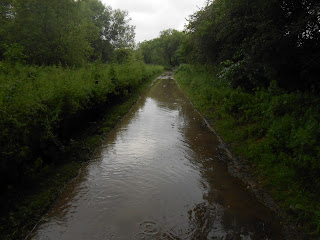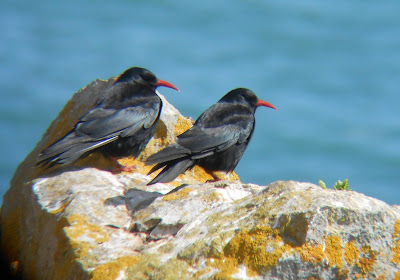29/06/12
28th had come with the pritty shit news that a major storm had completly flooded Upton warren. Reports show that water levels at the Moors pool rose by 4 ft, and simliarly, the flashes was completly flooded out. And this proved devistating for its breeding birds, and other wildlife. 2 LRP nests were lost, and a very young chick was also drowned. All remaining nests were drowned out, in what was another shame for breeding.
3 years of extreme summers cant be great for breeding birds now, and its a shame, putting increased pressure on birds which are already struggling with habitat loss.
Anyway, morning broke on Friday 29th, and i recieved news that a birder had seen 5 adult Med Gulls at Upton. I already knew that was an upton record, but it got me wondering where they had come from? Obviously flooded out from nest sites, but where is there were there are 3 pairs of breeding Med Gull nearby?
I know of a couple of sites where they are breeding in small numbers, but would these numbers equel the amount that had been found. But anyway, i was busy, i had to practise for my ESB exam the next Monday!
Upon return home however and checking Birding Today, i was shocked to see that over the coarse of the day, birders had found more birds, and now there was a large flock hanging around (at this point about 7 or 9, or something)
As regular readers will know, or anybody that follows me on my Facebook page, or anyone who knows me in general, you would know i have abit of a 'thing' for Mediterranean Gull. A sexy gull to say the least. And one which i spend hours looking for in the Upton Roosts later in the year.
I sneakily brought up the birds to my dad, and amazingly, we headed straight there!
The birds had been reported from the flashes, so we first headed there. However, i was quite suprised, and saddened to find that there were no 'med's' there, whcih was a shame, because the
BHG flock was very close to the hide, being pushed closer due to very high water levels.
It was quite shocking to see the damage after the floods around the flashes, and (as you would expect) many birds had completly deserted the site. The LRP nests which had been here were gone, and nesting cages were well underwater, and the birds had abandoned the site
One of the
Avocet chicks had surcomed, with only 7 remaining.
Lapwing numbers, however, were up. the drake
Teal from the previous weekend was still here.
Being pushed for time, we then headed to the Moors Pool, where our luck was better, and, looking from the West hide, i was soon watching a flock of
MEDITERRANEAN GULL!
Initially, there was 4 adults on the shingle island, and they spent alot of time posturing to each other and calling. I tried some long range photo's. And i got these two of the Meds doing just that!
The birds gave great views all round, On the deck, In the water, and in the Air. I was reminded how distinctivly 'white' they are in flight aswell, and it was great to see such numbers at a site where usually you get one or two.
I only manadged one video before i filled the memory card.
A couple of the adult birds flew off to the north, presumably to feed in fields, But that was where the fun began. So the total now stands at 4 birds.
As time went past, more birds piled in and out, and we kept picked up new
Med Gulls. A 2nd summer revealved itself, and soon, we were watching 3 different 2nd summers at the same time, two standing right next to each other, the other sitting in shallow water. 7 now.
The other birder in the hide clocked a 1st winter in Amys Marsh and i found a second 1st winter that had just stood up on the island, This making a total of 9 birds!
How Many
Med Gulls in this photo? Answers on a postcard (Or a comment :P) (P.s. This isnt very hard)
One of the 1st winter birds had very distinctive black mask, while the other bird had a very faded mask, the second of which was very advanced, with basicly 2nd year plumage, However, its 1st year wing pattern gave it away.
Two adults and a 1st winter. The very distinctivly dark bird. bird
The previous county record stood at 4 birds together at once, so this record would have been well and truily smashed with this flock alone, however, watching throughout the day, and subsequent photo analysis has revealed that a minimum total for the day to be 11 birds. Who knows how many more there could have been?
This number also sets a new regional record, which again, was well and truily smashed!
Get in there Upton Warren!
I dont believe in carma or anything, but its a coincidence that such an influx could happen the day after such disasterous flooding. Such is the highs and lows with nature watching.
MB





































